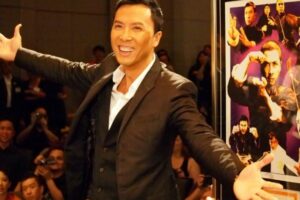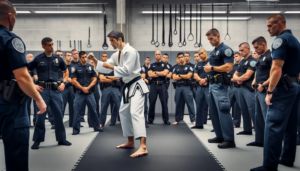
Curious about which martial art means “empty hand” in Japanese?
This article delves into the martial art named ’empty hand’, tracing its origins, uncovering the reasons behind its unique name, and examining its key physical techniques.
Contents
Which Martial Art Means Empty Hand In Japanese?
The martial art that means “empty hand” in Japanese is Karate (空手). The word is composed of two kanji: 空 (kara) meaning “empty”, and 手 (te) meaning “hand”.
Karate originated in the Ryukyu Kingdom, which was annexed by Japan in the 19th century.
Its development was significantly influenced by both Okinawan fighting techniques in the early 17th century and Chinese martial arts like Kung Fu, reflecting the Ryukyu Kingdom’s strong cultural and trade relations with China.
Originally, Karate was written as 唐手, also pronounced ‘karate’, which translates to “Chinese hand”. This term acknowledged the Chinese influence on the martial art.
However, in the early 20th century, there was a deliberate shift in the writing and interpretation of Karate.
The kanji 唐 (Tang), representing the Tang dynasty of China and by extension, Chinese influence, was replaced with 空 (kara), meaning “empty”.
This change, championed by prominent Karate masters like Gichin Funakoshi, was a strategic and philosophical rebranding aimed at gaining acceptance within Japan and disassociating the art from its Chinese roots during a period of rising Japanese nationalism.
Why Does Karate Mean “Empty Hand” In Japanese?
Karate means “empty hand” in Japanese primarily because its techniques focus on using the body itself as a weapon, rather than relying on external tools or weapons.
This term is deeply rooted in the martial art’s history, particularly in Okinawa following the 1609 invasion by the Shimazu clan.
The invaders imposed a weapons ban, compelling the Okinawans to develop and refine unarmed combat techniques, giving rise to the term ’empty hand’ to describe their method of weaponless self-defense.
Additionally, the term embodies a philosophy of mental and physical emptiness, aligned with Zen Buddhism’s principles, which greatly influence Japanese culture and martial arts.
In this context, “empty” signifies a state of mind free from anger, fear, ego, and preconceptions, allowing practitioners to focus purely on the discipline.
This philosophical shift was essential for Karate’s integration into Japanese martial culture.
By adopting the term “empty”, Karate was physically representing a weaponless form of self-defense and ideologically aligning itself with the values of spiritual emptiness and mental clarity.
In summary, Karate means “empty hand” in Japanese as a literal description of its weaponless techniques and as a representation of its philosophical roots, historical evolution, and the mental discipline it instills in its practitioners.
The end of the weapon ban in 1875 and Okinawa’s subsequent annexation by Japan marked a significant turning point, leading to Karate’s spread across Japan.
The Physical Techniques of Karate: Understanding the ‘Empty Hand’
Karate, renowned for its “empty hand” philosophy, is equally distinguished by its diverse range of physical techniques.
These techniques are the cornerstone of Karate, demonstrating how the body itself becomes a powerful tool for self-defense and offense in the absence of weapons.
1. Striking Techniques: The Foundation of Karate (Empty Hand)
The most fundamental aspect of Karate is its striking techniques. Practitioners learn a variety of punches (tsuki), kicks (keri), and open-hand strikes such as knife-hands (shuto) and palm-heel strikes.
These techniques aren’t just about force but also about precision, timing, and control. They’re designed to efficiently neutralize threats and are often executed targeting vulnerable areas of an opponent’s body.
2. Blocking and Counterattacking
In Karate, defense is as crucial as offense. Blocking techniques (uke) are taught to deflect or redirect attacks.
These blocks aren’t passive but are often used to create opportunities for counterattacks. The seamless transition from defense to offense is a key element of the Karate strategy.
3. Kata: Choreographed Patterns of Movement
Kata, or forms, are sequences of movements that simulate combat scenarios. Each kata is a fixed pattern of defensive and offensive techniques that practitioners perform solo.
They’re crucial for developing muscle memory, balance, coordination, and understanding the flow and application of techniques.
4. Kumite: Sparring Practice
Kumite, or sparring, is where practitioners apply their techniques in a controlled combat setting. It ranges from basic, pre-arranged drills to free sparring.
Kumite is essential for understanding timing, distance, and the practical application of Karate techniques against an opponent.
5. The Role of Breathing and Focus
Breathing techniques and mental focus are integral to mastering Karate’s physical moves.
Proper breathing enhances power and stamina, while mental focus sharpens awareness and reaction time, embodying the “empty hand” philosophy of mental clarity and presence.




